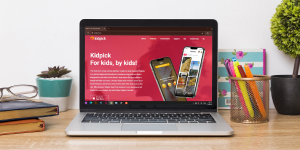From TheFacebook.com to Facebook.com to FB.ME to M.ME

When you want to register a domain name and it’s not available, the first thing that the name suggestion tools offer is to add the “the” or “my” before the domain. That’s what I imagine happened when Mark Zuckerberg wanted to register a domain when he first started Facebook. As you probably already know, Facebook once was Thefacebook.com. But what’s more important is – what made Zuckerberg to drop the infamous „the“ from Facebook domain name? They always wanted to be just “Facebook”, but About Face, Corp. was already using that domain at the time. And when you check the domain name availability, the registrar will show suggestions if it’s already taken.
Back in 2005, Facebook started to grow rapidly. That is when Sean Parker, an entrepreneur and founder of Napster, came along. Openly fascinated with TheFacebook (as a service, not as a domain name), he suggested to drop the infamous „the“. Dropping the “the” costed them $ 200.000. The site name has changed along with the domain, as a part of the site’s first major redesign since its launch.
Rebranding of a service goes hand in hand with changing a domain name
[su_box title=”The textbook example” class=”trap small right”]Facebook gave us an amazing example of brand reinforcement by changing the domain name years ago. [/su_box] What amuses me the most is the huge rebranding lesson Facebook taught us years ago. If you talk to marketers, every single one of them will tell you that rebranding is a slippery slope. There are a lot of various aspects you need to consider in order not to hurt your brand. But you don’t have to be a wizard or genius from Harvard to do so. 🙂 While doing a research on Facebook rebranding, I found many articles suggesting the best ways of changing the corporate image of an organization – if your business is still awaiting on its great expansion, there is a lot of space for rebranding. You won’t be surprised if I tell you that’s exactly what Facebook did. The truth is – the brand became recognizable, but domain name change was a great call. And they picked a perfect time for doing it. Can you imagine asking someone if he or she has the TheFacebook account? Probably not. Although I think that TheFacebook was going to survive anyhow, the beauty of a successful brand lies in its simplicity. And they made it happen. In a blink of an eye, with the change of a domain name (and the name of the brand) Facebook evolved from Ivy league social network to the first thing all of us think after waking up. The textbook example of great brand reinforcement! Blame it on the domain name change. 🙂
FB.com
In 2010, Facebook bought FB.com domain from the American Farm Bureau Federation and paid a king’s ransom for it – $8.5 million dollars, which is 42 times more than the company originally paid for facebook.com! One feature of the new Facebook Messages is that it assigns you a personalized Facebook.com e-mail address. If a friend sends a message to your Facebook e-mail, you will receive it in your Facebook Inbox. Unfortunately, Facebook’s employees were using the Facebook.com domain for their e-mails already, so they had to switch to another domain. That’s why Facebook needed to buy FB.com in the first place.
Stepping into the mobile-first platform with mobile apps
FB.me
With the launch of FB.ME in 2010, Facebook’s new URL shortener .ME domain is helping the world’s largest social network save its more than 350 million users valuable digits in a world where every character counts. Used as the Facebook shortener on their mobile interface, it automatically shortens a mobile link (for example a m.facebook.com link) to FB.ME link. This is clearly another confirmation of the intrinsic value of our extension’s personalized branding and ability to instantly create a ‘call to action’ using minimal characters and maximum impact. Another feature of the shortener is the ability to take you straight to the Facebook username. For example, the short URL fb.me/domainME will take you to dotME’s fan page. Isn’t that pretty awesoME?
Moving to mobile-first platform was undoubtedly a very wise move. After the launching of m.facebook.com and officially announcing mobile support in 2007, Facebook Messenger was launched for Android and IOS in 2011. Facebook did a whole lotta work to make mobile app users feel comfortable. Their Creative Labs department introduced services like Sling.me (early Snapchat clone, used for creating/sharing pictures/videos with one or more of your friends that will eventually be erased from the cyberspace) and Rooms.me (mix of a forum and news group, with a pinch of Reddit and a dash of Instagram that lets you create “rooms” for the things you’re into, and invite others who are into them too). Unfortunately, both the department and services mentioned were shut down in 2015.
It is not a secret that back in 2012 Facebook acquired Instagram and in 2014 both Oculus VR, Inc and WhatsApp. That way, Facebook made clear that they will be using acquisitions as an expansion tool like many other internet giants.
Then, in 2016, Facebook acquired MSQRD.me (or Masquerade), an app that uses sophisticated facial recognition technology, combined with just the right dose of magic, to bring you video selfies like you’ve never seen before. Even Zuckerberg could not resist turning himself into Iron Man for a few hilarious seconds! 🙂
https://www.facebook.com/zuck/videos/10102701352035661/
Facebook URL is usually long and not so pretty looking. And that was not the only issue here. Until 2016, Twitter was counting links and photos in the 140-character limit of tweets. So, when you wanted to share a link from Facebook, it’s URL “ate” a lot of valuable characters. Same goes for Instagram, where photo description is limited to three visible lines. Something had to be done. Facebook Messenger code scan introduction couldn’t work without a shortened URL service so, in 2016, the company introduced M.ME Messenger Links. Domain name should be simple and short, which can make a positive influence on building brand awareness. With M.ME Messenger Links, aimed at businesses, users can create a short and memorable link (m.me/username) that, when clicked on or typed in, opens a conversation with that business in Messenger. With this launch of M.ME Messenger Links, Facebook’s popular communication tool just became essential in any company’s playbook, large or small! At the same time, it’s very attractive to every-day users, because it allows to type a friend’s username and send a message, without searching or scrolling down through the entire inbox.
Safety of the domain registry technical platform and policies
Well, that was a lot of Facebook .me domains and services acquisitions. And that’s what we at .ME consider as a confirmation of a reliable and long-term partnership. Domain name safety and reliability are of the greatest importance for us, and Facebook recognized it.
Our backend technical platform, Afilias, gives that reliability and stability, but also additional services like registry lock do. Registry lock is a service that provides an extra layer of security against domain name hijacking by locking the domain name at the registry level, preventing the domain name from being deleted or transferred or any domain name information from being altered.
I think we can all agree that investing in safety is never a bad idea!
Editor’s Note: This post was originally published in February 2013. A lot of things changed in the world of Facebook since then, so we decided to update the post accordingly.




